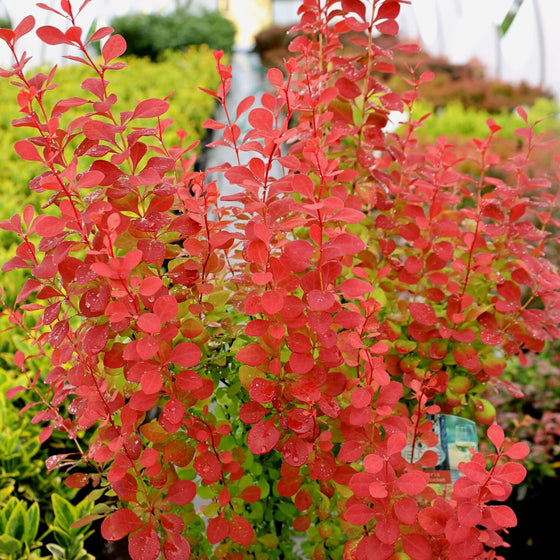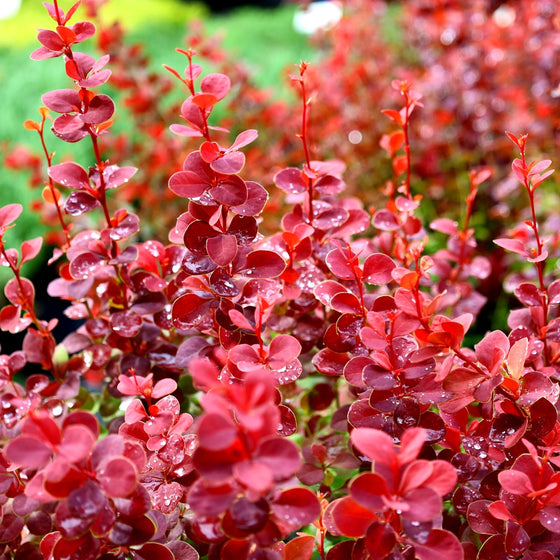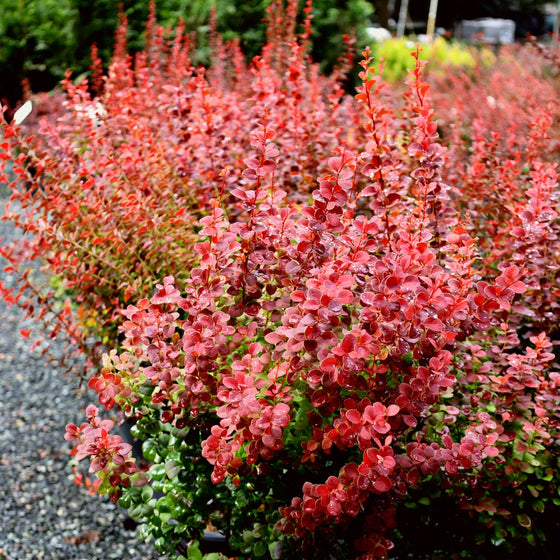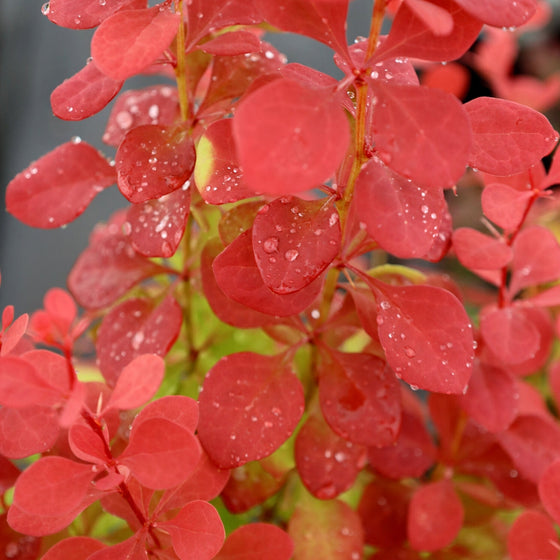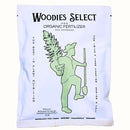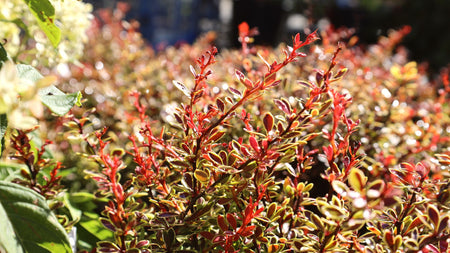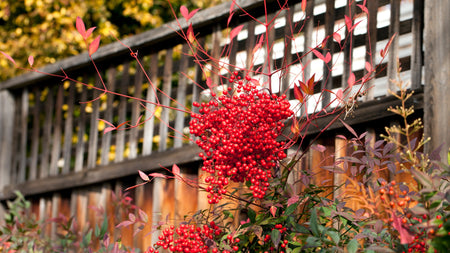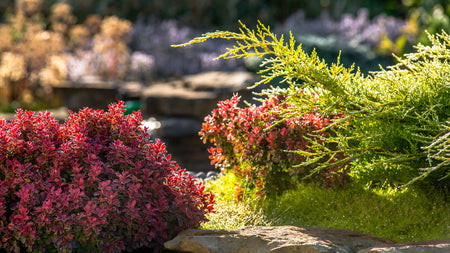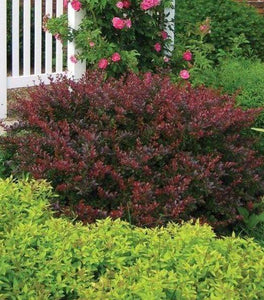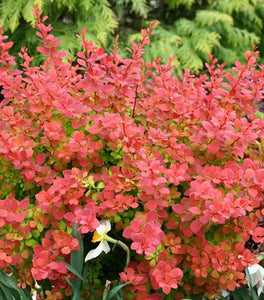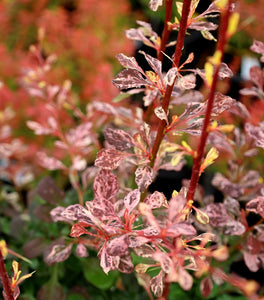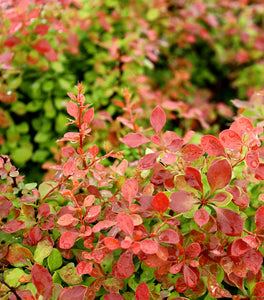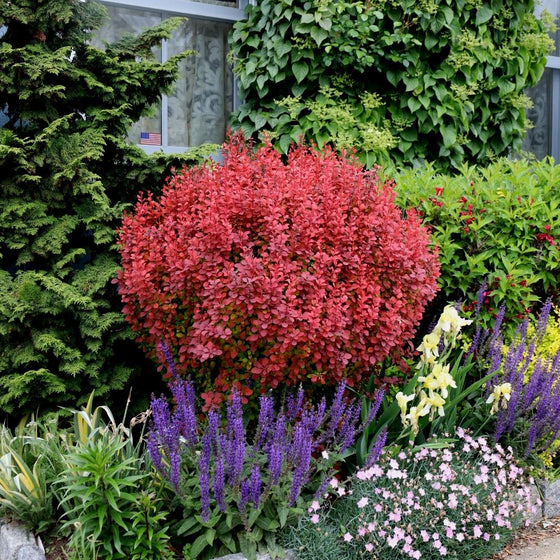
Images Depict Mature Plants
Orange Rocket Barberry – Vibrant Orange Foliage Shrub for Colorful Borders and Hedges
Bring bold color and texture to your garden with Orange Rocket Barberry.
The Orange Rocket Barberry (Berberis thunbergii ‘Orange Rocket’) is a compact, upright shrub that lights up the landscape with vibrant color from spring through fall. New foliage emerges bright coral-orange in spring, matures to rich green in summer, and turns fiery red in autumn. This ever-changing display makes it one of the most dynamic shrubs you can plant for year-round interest.
Perfect for tight spaces and colorful borders.
Growing 4–5 feet tall and 2–3 feet wide, Orange Rocket’s narrow, columnar shape fits beautifully into small gardens, borders, and foundation plantings. It’s also a stunning accent in mixed shrub beds or mass plantings, where its vertical form adds height and contrast to mounded perennials and evergreens. Whether used as a colorful hedge or a standalone specimen, this shrub brings unmatched vibrancy to any landscape.
Low-maintenance, drought-tolerant, and deer-resistant.
Once established, Orange Rocket Barberry is remarkably easy to care for. It thrives in full sun and well-drained soil, tolerating both drought and heat. Best of all, it’s naturally deer-resistant, making it an excellent choice for suburban and rural gardens where browsing can be a problem. Its thorny stems also help deter unwanted foot traffic, making it useful for low barriers or garden edges.
A colorful performer for every season.
Hardy in USDA Zones 5–9, this deciduous shrub delivers vivid foliage, low maintenance, and reliable performance year after year. From spring to fall, its fiery tones bring warmth and depth to the landscape, while its compact habit keeps it neat and manageable. For gardeners seeking a hardy, colorful, and adaptable shrub, Orange Rocket Barberry is a perfect pick.
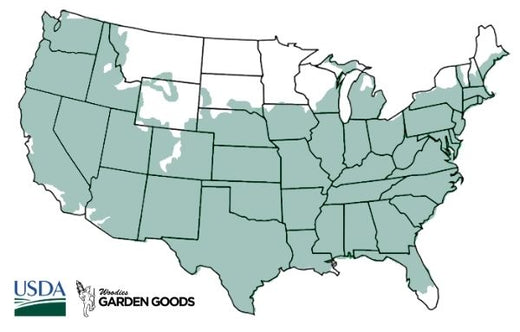
| Hardiness Zone: | 5-9 |
|---|---|
| Mature Height: | 4 to 5 feet |
| Mature Width: | 2 to 3 feet |
| Classification: | Broad Leaved deciduous shrub |
| Sunlight: | Full sun to partial shade |
| Habit: | Columnar |
| Flower Color: | Inconspicuous |
| Foliage: | Orange-coral new growth, green at maturity, ruby red in Autumn |
| Soil Condition: | Any well drained soil |
| Water Requirements: | Water well until established. |
| Uses: | Use as a vertical feature or to add color to the mixed border. |
How to Care for Orange Rocket Barberry
Be sure to read our planting instructions for a healthy and happy Orange Rocket Barberry
How do I plant an Orange Rocket Barberry?
Choose a location with full sun to partial shade and well-draining soil. Dig a hole twice as wide and just as deep as the root ball. Gently remove the plant from its container, loosen the roots, and position it so the top of the root ball is level with the soil surface. Backfill halfway, water deeply, then fill the rest and water again. Finish by applying a 2–3 inch layer of mulch around the base to help retain soil moisture and suppress weeds. Avoid piling mulch against the stem to prevent rot.
How often should I water Orange Rocket Barberry?
Water regularly during the first growing season to help the roots establish. Once established, this shrub is highly drought-tolerant and requires only occasional watering during dry spells. In most climates, deep watering every 10–14 days during summer is sufficient. Avoid overwatering—Barberries prefer slightly dry conditions and will not tolerate soggy soil.
When and how should I fertilize Orange Rocket Barberry?
Feed once in early spring with a balanced, slow-release fertilizer such as 10-10-10. Apply evenly around the root zone and water thoroughly. Avoid fertilizing late in the growing season, which can encourage tender new growth that may not harden before winter. Established shrubs generally only need one feeding per year.

Does Orange Rocket Barberry need pruning?
Minimal pruning is needed to maintain its tidy, upright form. If desired, prune in late winter or early spring before new growth begins. Remove any dead or crossing branches, and trim lightly to shape. You can also shear it after flowering for a more formal hedge appearance, though its natural columnar shape often requires little adjustment.

